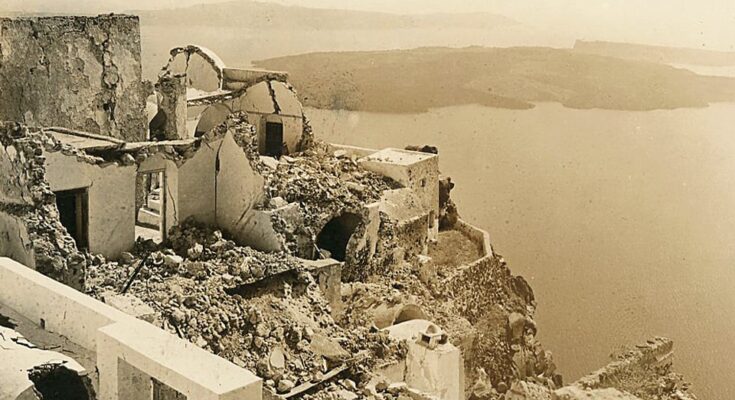On this day in 1956, a 7.5 magnitude earthquake hit Santorini and other Aegean islands, the largest to ever be recorded in Europe in the 20th century. It was followed by a tsunami 25 meters high.
At least 53 people were killed and more than 100 were injured. 35 percent of the houses collapsed and 45 percent suffered major or minor damage. Almost all public buildings were completely destroyed.
The earthquake struck in the early hours of July 9, 1956, and hit Santorini, Amorgos (the epicenter of the earthquake), Anafi, Astypalea, Ios, Paros, Naxos, Kalymnos, Leros, Patmos and Lipsi.
A total of 529 houses were destroyed, 1,482 were severely damaged and 1,750 were lightly damaged.
1956 Santorini earthquake followed by tsunami
The earthquake was accompanied by a tsunami, the height of which, according to local media at the time, reached 25 meters on the south-east coast of Amorgos, 20 meters on the north-west coast of Astypalaia, 10 meters on Folegandros and was weaker on various other coasts of the south Aegean.
The weakened tsunami even reached Kalamata in south-west Peloponnese where it destroyed several small boats in the harbor.

The professor of seismology of the Aristotle University of Thessaloniki, Costas Papazachos, had said: “It was one of the biggest earthquakes of the 20th century that struck in the early hours of July 9, 1956, almost leveled Santorini, causing an explosion of the Thira volcano and a huge tidal wave.
“The 9 July 1956 earthquake (magnitude 7.5), which occurred on the southern Amorgos sea basin fault, was the largest earthquake of the 20th century across Europe, from the Urals to Gibraltar and from Malta to Lapland. The catastrophic effects of the main earthquake were completed by the devastating aftershock (magnitude 6.9) that followed 12 minutes later.”
The quake tested the state machinery, which had not yet recovered from the 1953 major earthquakes in Zakynthos, Kephalonia and Ithaca.
Then Prime Minister Konstantinos Karamanlis declared Santorini a state of “large-scale local disaster” and visited the affected area on July 14.
Many countries had offered to send aid for the relief of the earthquake victims. The only country whose aid was refused by Greece was Great Britain, perhaps because of the British violent clampdown on Cypriot fighters who had launched a campaign for unification with Greece.
One of the most important side effects of the great earthquake was the great internal migration of the population of Santorini, mainly towards Athens.
Greek and international scientists have been warning of the possibility of earthquakes, underwater volcanic eruptions and accompanying tsunamis in the Santorini-Amorgos area.
The undersea area between Amorgos and Santorini is one of the more active areas of the Aegean Sea, where volcanos and active faults dominate.



